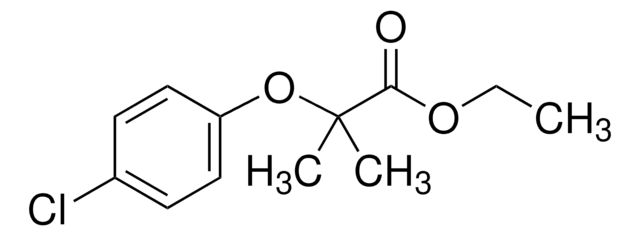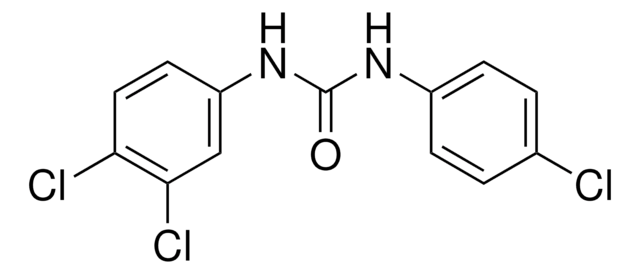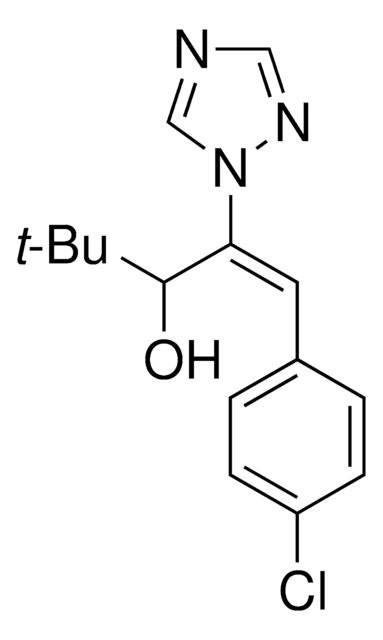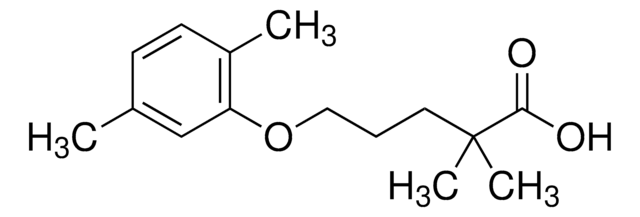41326
Clofibrate
analytical standard
Synonym(s):
2-(4-Chlorophenoxy)-2-methylpropionic acid ethyl ester, Ethyl 2-(4-chlorophenoxy)-2-methylpropionate, Ethyl 2-(4-chlorophenoxy)isobutyrate
About This Item
Recommended Products
grade
analytical standard
Quality Level
Assay
≥99.0% (GC)
shelf life
limited shelf life, expiry date on the label
technique(s)
HPLC: suitable
gas chromatography (GC): suitable
refractive index
n20/D 1.502-1.504
application(s)
forensics and toxicology
pharmaceutical (small molecule)
format
neat
SMILES string
CCOC(=O)C(C)(C)Oc1ccc(Cl)cc1
InChI
1S/C12H15ClO3/c1-4-15-11(14)12(2,3)16-10-7-5-9(13)6-8-10/h5-8H,4H2,1-3H3
InChI key
KNHUKKLJHYUCFP-UHFFFAOYSA-N
Gene Information
human ... PPARA(5465)
Looking for similar products? Visit Product Comparison Guide
Application
Recommended products
Signal Word
Danger
Hazard Statements
Precautionary Statements
Hazard Classifications
Acute Tox. 4 Oral - Eye Dam. 1 - Skin Irrit. 2 - STOT SE 3
Target Organs
Respiratory system
Storage Class Code
10 - Combustible liquids
WGK
WGK 3
Flash Point(F)
235.4 °F - closed cup
Flash Point(C)
113 °C - closed cup
Choose from one of the most recent versions:
Already Own This Product?
Find documentation for the products that you have recently purchased in the Document Library.
Our team of scientists has experience in all areas of research including Life Science, Material Science, Chemical Synthesis, Chromatography, Analytical and many others.
Contact Technical Service








